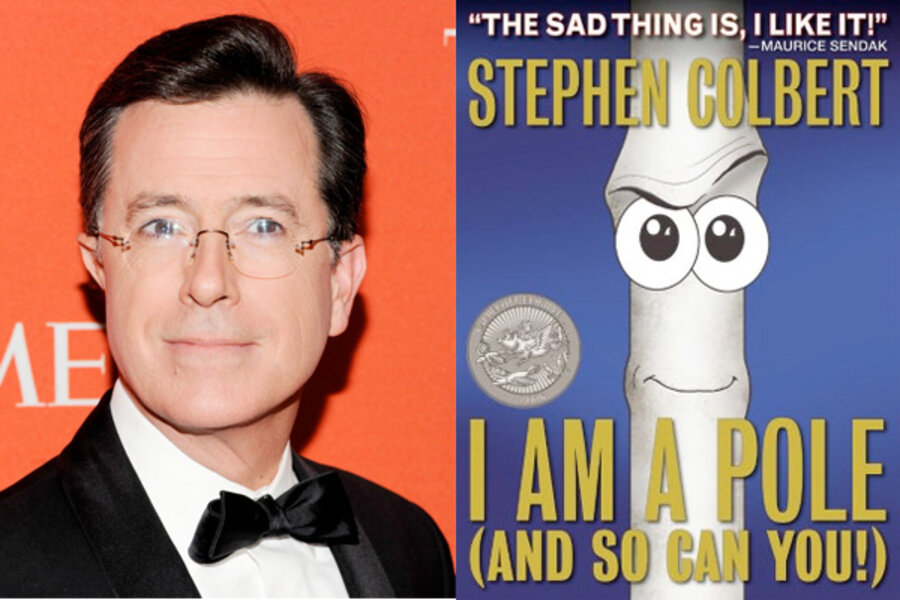Stephen Colbert's children's book tops the bestseller list
Loading...
The late children’s book legend Maurice Sendak gave it a memorable review in a January appearance on “The Colbert Report”: “The sad thing is, I like it,” Sendak told TV host Stephen Colbert about Colbert’s planned children’s book.
And now Colbert’s picture book, “I Am A Pole (And So Can You!),” is a reality, having debuted earlier this month and currently holding the number one spot on the Hardcover Advice and Miscellaneous section of the New York Times bestseller list. (And that quote from Sendak is splashed across the top of the cover.)
The book was first introduced to the “Colbert” viewing audience when Colbert was interviewing Sendak in a two-part special and mentioned his interest in breaking into children’s books. Colbert had already written one original work, “I Am America (And So Can You!),” a book for adults. Colbert said the idea of introducing “Pole” into the discussion with Sendak arose during interview preparation.
“My character’s motivation for the [book] was his wanting to get into writing celebrity books, which we knew was something loathed by Mr. Sendak,” he told Publishers Weekly.
But Sendak’s reaction was unexpected.
“I knew when he laughed throughout and said he liked it, it could be a real thing,” Colbert said.
Parents, beware. Colbert's book is a parody of a children’s book than the real thing. Among other adventures, the pole of the title, which is going through an identity crisis, briefly moonlights as a stripper pole.
And of course, most of the jokes would go over kids’ heads, including “I wished I was the North Pole, and marked the home of Santa, or even just a Gallup poll, calling voters in Atlanta” and “I tried and failed at other things, that I shouldn’t talk about. Like that summer with the phone poles, getting totally strung out.”
But young adults and adults, especially those who are fans of the late-night host, will undoubtedly appreciate the humor, and Colbert himself makes a cameo near the end with a tongue-in-cheek verse. “For people it seems easy to find a role that suits you most,” the pole laments. “Like a job of true importance, such as late night TV host.” (The text is placed next to pictures of an astronaut, a doctor, a member of the military, and President Barack Obama.)
The inside flap on the picture book advertises “sequels,” including “Pole Eats His Vegetables,” “Pole Meets Another Pole,” “Pole Meets the Other Pole’s New Boyfriend,” “How the Pole Stole Christmas,” and “Pole Learns About Copyright Infringement.”
A Boston Globe review said the rhyming was clunky and the illustrations were basic, but that that was beside the point, calling it “deliberately bad.”
“The design? So-so at best,” wrote reviewer Chelsey Philpot, who is a book review editor at School Library Journal. “The relation of image to text? The pictures deliver the humor…. Overall, is it terrible? Does a Wild Thing like a rumpus? But it delivers some laughs, and Colbert’s fans especially will love the twisted humor.”
Colbert's book aimed at adults, "America Again: Re-Becoming the Greatness We Never Weren't," is due for release in October.
Molly Driscoll is a Monitor contributor.







